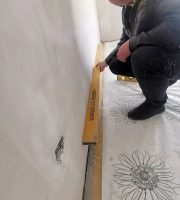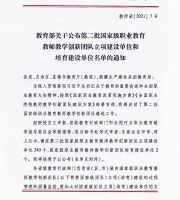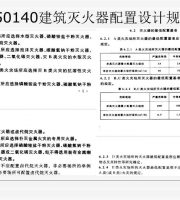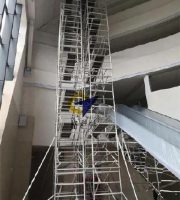7.
The pole spacing of some projects is more than 1200mm.
Just touching the edge, can it be done? 8.
As shown in the figure above, the reinforcement in the floor is divided into upper reinforcement and lower reinforcement, They are all crowded together and can’t be separated.
5.
During concrete pouring, there is no one to watch.
Some reinforcement are well bound, and the position and size meet the requirements.
2.
For example, the beam reinforcement needs to meet a certain length into the column.
Is it really invisible for concealed works? 1.
This is also the reason why steel bars are bent repeatedly.
In addition, the distance between the welding point and the steel bar bending point shall be greater than 10 times the steel bar diameter, which is the same as the principle of steel bar hot bending mentioned in Article 5.
The thread leakage is too long, which means that the screw in length is not enough.
Therefore, According to the requirements of the standard atlas, the anchorage length of all kinds of reinforcement must be clear, and the requirements must be met.
6.
The reinforcement between components (such as beam and column) establishes the connection between components by anchoring.
The deviation of wall (column) reinforcement refers to the deviation of reinforcement position.
Pouring concrete directly will bring irreparable serious consequences.
The reinforcement connection is like kissing.
The steel bar trade union thought of such a time-saving and labor-saving method.
How can they bear the force correctly? Two.
According to the design requirements, there are 8 column reinforcements in total, and 5 reinforcements will be located outside the column! The severity can be imagined! There are many reasons for deviation.
The thickness of the concrete protective layer is insufficient, and the reinforcement will rust if exposed to the air for a long time.
As shown in the above figure, the reinforcement of a column is offset by 150mm.
Hot bending is to heat the steel bar with oxygen flame and then bend it.
If the protective layer is too small or the reinforcement is leaked, the life of the building will be shortened.
The inspection is relaxed, and then it is reduced layer by layer.
However, it is common that the construction is not carried out according to the scheme when erecting on site.
After the second floor, the point is reduced.
We hold a thin iron wire in our hand and bend it repeatedly for several times.
In the process of straightening, some straightening machines will straighten the reinforcement while straightening the reinforcement, which also belongs to thin reinforcement.
The reinforcement anchorage is not enough.
Some engineering earthwork backfilling is in the rush period..
Before concrete pouring, various measures should be taken to ensure it, and careful review should be carried out.
Template worker 1, the spacing between the upright poles is reduced or reduced.
4.
The coiled reinforcement needs to be straightened after entering the site.
Steel bar bending must adopt the method of cold bending, and can not be bent repeatedly.
The tensile strength of these bars is less than the requirements of specifications and standards.
There is no need for electricity at the connection site, so it is widely used in construction sites.
Therefore, the reinforcement needs to enter the concrete with a certain thickness, which is the protective layer.
10.
According to the specification requirements, the beam reinforcement must cross the column centerline by 5 times the reinforcement diameter.
The weld length of reinforcement welding is not enough.
The specification stipulates that the special construction plan should be worked out for the erection of the formwork support, and the structural design shall be designed and calculated, and the examination and approval shall be carried out according to the regulations.
Rust will reduce the diameter of the reinforcement and endanger the life of the building.
The most serious consequence: collapse.
Once used in engineering, it will reduce the bearing capacity of concrete members.
The first floor is strictly required, and the point is dense.
Some people think it’s troublesome to reduce one or two.
The exposed thread outside the straight thread is too long, which is also a straight thread.
Thin bars are bars whose diameter deviation does not meet the requirements.
There are not a few construction sites with reduced horizontal poles.
The formwork support shall be lifted directly from the backfill without tamping.
For example, the steel bar that needs to be bent is bound straight.
Construction errors, drawing errors and deformation during concrete pouring can cause reinforcement deviation.
The requirements for stirrups in the absence of stirrups are as follows: when the column meets the beam, there must be stirrups in the column, and when the main beam meets the secondary beam, the main beam must have stirrups.
After the reinforcement is offset, different treatment schemes must be adopted according to the size and severity of the offset.
One direction is pulled through, and the other direction? There are those who pull one after another, those who pull one after two, and even those who pull one after three or four.
However, it is common sense that steel will be tempered when heated and then cooled, and the strength of reinforcement will be greatly reduced.
The reason does not need to be explained in detail.
Later, there was no problem.
The lack of stirrups will greatly reduce the shear capacity of this part and greatly reduce the bearing capacity.
9.
2.
The most serious consequence: collapse.
Once the facts are formed, the consequences can be imagined.
The specification requires that single-sided welding shall meet 10 times of reinforcement diameter and double-sided welding shall meet 5 times of reinforcement diameter.
When the thin steel bar and formed steel bar enter the site, the test pieces shall be taken for yield strength, tensile strength, elongation and weight deviation inspection, and the inspection results must comply with the provisions of relevant standards.
It can be broken without pliers.
Generally, the steel bar is bound incorrectly and rectified.
Steel bar bending is baked by electric welding.
After the third floor, all the management personnel are on the road.
The backfill earthwork is equal to the foundation of the formwork support.
The pole spacing of 800mm is required to be 900mm, and the pole spacing of 900mm is required to be 1000mm.
During concrete pouring, there are changes, and the final result is not good.
According to the specification requirements, the horizontal bar is required to be connected vertically and horizontally.
During concrete pouring, the reinforcement needs to be watched by a specially assigned person to prevent the reinforcement from being trampled and deformed during concrete pouring.
If necessary, the design unit shall be invited to adjust the design, and it must not be cut at once.
In this way, the overall stiffness of the formwork support is reduced.
When the welding length is not enough, the strength of reinforcement connection area will be reduced.
3.
The end face of the straight thread joint reinforcement is uneven.
Supervisor, please be vigilant! These barbaric construction practices on the construction site have serious consequences! Reinforcement binding is barbaric construction, and the construction site personnel ignore it.
The stress of the steel bar connection with straight thread connection completely depends on the mechanical biting force of the thread.
If the end face is uneven, it means that the effective screw head screwed into the sleeve is reduced and the bearing capacity of the steel bar connection part is reduced.
The straight thread connection of the reinforcement has the advantages of simple processing and convenient connection.
3.
The anchorage is too short, and the reinforcement may be pulled out during the stress process of components.






